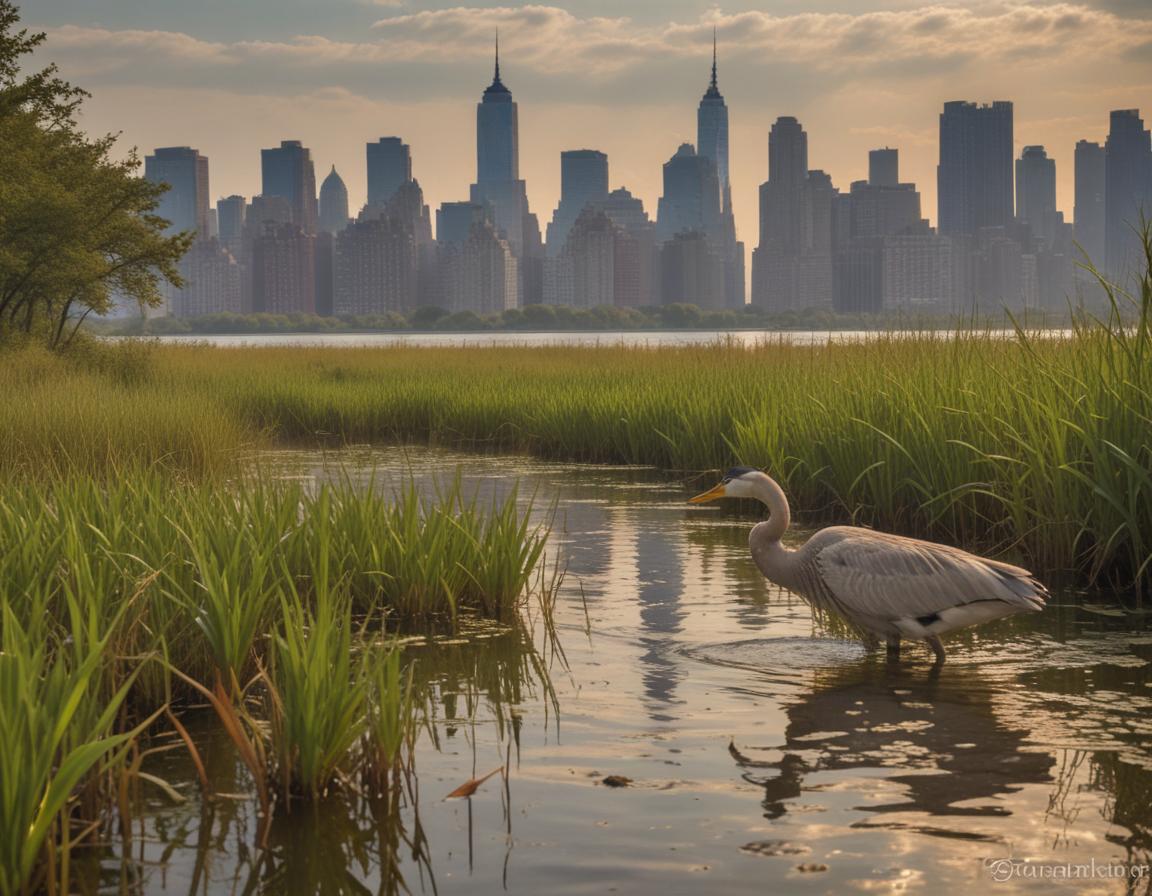
The Vital Role of New York Wetlands for Local Wildlife
Have you ever stopped to think about the hidden treasures of New York? Among the bustling streets and towering skyscrapers lie the incredible wetlands, which are essential ecosystems that play a crucial role in preserving the region’s biodiversity. Estas áreas húmedas—que abarcan pantanos, marismas y estanques—proporcionan hábitats esenciales para innumerables especies de vida silvestre mientras contribuyen significativamente a la salud ecológica de Nueva York.
Wetlands Functioning within the Urban Ecosystem
In cities like New York, wetlands act as natural filters, purifying water by absorbing pollutants and sediments. This function is vital for a densely populated area. Además, estos ecosistemas son clave para la regulación del agua, ayudando a prevenir inundaciones al absorber el exceso de agua durante las fuertes lluvias.
Diverse Inhabitants of the Wetlands
A myriad of species rely on New York’s wetlands for survival. For instance, spotted salamanders (Ambystoma maculatum) depend on vernal pools for reproduction, as their eggs and larvae cannot survive in bodies of water containing fish, their natural predators. Los sapos de primavera (Pseudacris crucifer) a menudo se encuentran en áreas húmedas adyacentes a estos cuerpos de agua, mostrando la interconexión de la vida silvestre con los humedales.
American eels (Anguilla rostrata) also inhabit these ecosystems at various life stages, migrating to the ocean to spawn and returning to the rivers and streams to complete their life cycle. Otros residentes notables incluyen cangrejos herradura y peces migratorios como el arenque del río, que se aventuran en las aguas dulces de Nueva York para desovar.
Impact on Local Wildlife
Wetlands serve as refuge and food sources for a variety of birds, reptiles, and mammals. Notable examples include shorebirds such as piping plovers (Charadrius melodus), which are endangered due to habitat loss, and red-tailed hawks (Buteo jamaicensis) that are common in urban areas where they hunt over wetland-adjacent open fields. Estas especies, junto con muchas otras que habitan los humedales, significan un ecosistema saludable, reflejando una biodiversidad más amplia dentro de Nueva York.
Conservation Challenges
Despite their importance, New York’s wetlands face significant pressure from urbanization and pollution. La conservación de estos ecosistemas es crucial no solo para proteger las especies nativas, sino también para mantener el equilibrio ambiental urbano. Las iniciativas de conservación y restauración son necesarias para garantizar que estos hábitats puedan continuar apoyando la vida silvestre local en el futuro.
Conclusion
New York’s wetlands are invaluable assets that sustain a diversity of wildlife and provide essential ecological benefits. En el contexto de los desafíos ambientales, debemos reconocer la importancia de proteger nuestros humedales. La conservación de estos ecosistemas no solo beneficia a la vida silvestre local, sino que también enriquece la calidad de vida para los residentes de Nueva York al promover un entorno urbano más saludable y equilibrado.
On a personal note, as a cat owner, I understand how challenging it can be when our furry friends exhibit unwanted behaviors. If you’re dealing with issues like litter problems or cat spraying, know that you are not alone. There is a clinically proven way to swiftly address this concern, and you can learn more about it here. Imagine overcoming this hurdle with ease and bringing peace back to your home!
Remember, you can make a difference in the lives of both wildlife and your household. Let’s champion the cause together!



